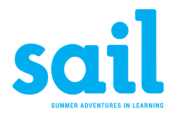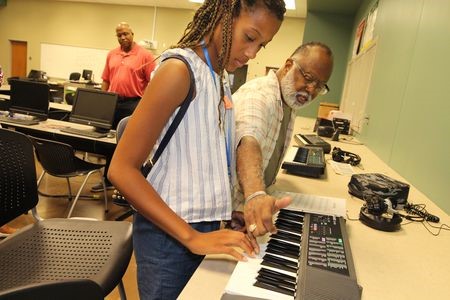By Trisha Powell Crain | tcrain@al.com
This story is a project from the Alabama Education Lab, a new initiative from AL.com, and was supported through funding from the Solutions Journalism Network. To learn more about the Ed Lab and to get alerts about future work and events, sign up for its newsletter, Ed Chat.
Lots of experts say summer learning — mixing academics with fun activities — is a great way to keep kids on track after a difficult year and help others catch up.
Just don’t call it summer school.
“The acid test of a good summer learning program is if the kids think they’re at camp, but the teachers know they’re at school,” said Jim Wooten, who leads the Alabama-based group called Summer Adventures in Learning, or SAIL, which provides funding for summer learning programs.
Summer learning typically means helping kids make targeted gains in science, math and reading skills while cooking, building rockets or planning a stage production. Some Alabama programs currently are hoping to host activities in-person this year, and say structured activities led by teachers and other professionals will help slow or reverse the “COVID slide,” which appears to be affecting children of color and those in low-income families the most.
“There are so many kids that I know we’re going to have to catch up,” said Elizabeth Fleming, who leads The Schools Foundation in north Alabama, “and we’re going to have to be very deliberate in making sure they have a fun place to learn during the summer.”
This summer, experts say giving a child access to a strong academic curriculum, mixed with physical and outdoor activities like hiking and field trips, is more crucial than ever. A solid summer learning program will offer about 70 hours of learning over the course of the program, which should run five to six weeks, Wooten said.
The research organization McKinsey & Company, comparing historical and current test results, predicts students, on average, could lose five to nine months of learning by the end of June. Students of color fare worse than their white classmates, the group predicts, finding they could be six to 12 months behind, while white students could be four to eight months behind.
That’s in addition to the regular “summer slide,” which many experts have documented. Young children can lose weeks and months of learning gained over the course of the school year, especially if they don’t have access to enrichment programs, computers at home, tutoring or parents who are able to read books and work on math skills.
“Think of [students] as a tub, and we’re pouring into them the whole year,” said Andrew Maxey, who the director of strategic initiatives for Tuscaloosa City Schools. “Summer is the drain. Some kids put a stopper in the drain. Other kids are gaining nothing and also losing.”
SAIL partnerships
Fleming cultivates partnerships between school districts and community-based summer learning programs, working with three school districts in Madison County. This year, the foundation will help fund 14 summer programs, combining grant funding from SAIL and the area’s Community Foundation.
SAIL is providing nearly $1 million in funding to more than 50 summer learning programs across the state. Those programs combined plan to serve more than 3,000 students this summer.
All of SAIL’s programs test students at the start and end of the program; high-quality summer learning should show academic results, experts say.
In the summer of 2020, even with the challenges COVID restrictions imposed — many summer learning programs went virtual and sent home deliveries of kits filled with science activities, dry erase markers and even potting soil and seeds —students in SAIL-supported programs showed learning gains, averaging 2.3 months of gains in reading and 1.6 months in math.
On average, since SAIL began measuring the academic impacts of their programs in 2017, students in SAIL-funded programs gained an average of 1.7 months in reading and 2.6 months in math, according to the group.
Read more: SAIL program helps Birmingham students close gaps
SAIL, now in its ninth year, requires programs to follow a quality control framework in exchange for funding, which is essential, Fleming said, to ensure students have a blend of high-quality academics and enrichment activities during the day.
“A lot of what our programs are doing is cloaking academics in fun,” she said.
Fleming says successful and high-quality programs should both have certified teachers to teach academics and work with other partners to workshop aspects of hiring and content.
SAIL’s philosophy is that partnerships between schools and local organizations — including faith-based organizations, community groups, municipal agencies, youth organizations and philanthropic groups — will create better programs together than any one group could on its own.
The programs can also help working parents fill child care and nutrition gaps during the summer.
Eighty-four percent of students enrolled in SAIL programs in 2020 qualified for free- and reduced-price meals, according to the organization.
But most importantly, because summer learning programs aren’t mandated by law, Wooten said, they must be places students want to go.
“In Alabama, [summer learning] is a fairly new concept,” he said. “There’s a whole paradigm shift that has to go on in the minds of parents.”
Statewide efforts
Alabama State Superintendent Eric Mackey said summer learning will play a huge role in “academic recovery,” or the push to reverse learning lost during school closures and remote learning. The state is directing the bulk of $900 million in federal coronavirus relief toward recovery.
Mackey predicts children’s and school’s recovery will take two to three years. The Alabama Department of Education’s newly-released Recovery Toolkit recommends summer learning and enrichment camps as one of many ways to recover what they call “unfinished learning.”
Gov. Kay Ivey addressed the need for learning outside of the traditional school year in her State of the State address Feb. 2.
“Catching our students up won’t happen overnight or during the traditional school hours,” she said.
While districts and community programs make plans for summer learning, Wooten said families should ask questions before enrolling their child in a program. They should look for a program that is at least four weeks, and four to five days a week, with strong academics, especially reading and math, offered. The program needs to have an assessment or test that will identify the child’s specific academic needs and measure improvement and growth during the program.
A high-quality program will have a lot of enrichment and camp-like activities, too, with a physical activity component, preferably getting outdoors and maybe even doing field trips.
“Your child should be having fun even as they learn,” he said.
Tuscaloosa City Schools
Tuscaloosa City Schools has been beefing up summer programs for several years and experimenting with different ways to allow children to choose their own learning options.
Students make mobiles that explore different ways to visualize poetry and vocabulary during a Tuscaloosa summer learning program in 2019. Programs went virtual last year, but plan to resume in-person enrichment and academic activities this summer. Courtesy of Tuscaloosa City Schools.
Its programs are having a positive impact on students, according to Andrew Maxey, who has been leading the effort for the district since 2017. Elementary school students who attend have shown little to no loss in reading compared with their non-attending peers, he said.
In math, students in third through eighth grade gained as much as one-and-a-half months of learning, compared with an average two-month loss for students who didn’t attend their programs.
Maxey said his district couches offerings as enrichment — surveys of parents there showed there was a need for “affordable, engaging programs with a strong academic component.” Teachers in the district apply for a spot in the district’s summer learning and are given some flexibility in what they choose to teach.
Teachers’ ideas include digging for dinosaurs, using drones and model planes to understand the physics of flying and using a kid-run cupcake bakery to practice fractions, Maxey said.
Children of more affluent families typically have more access to structured learning, and as a result, don’t suffer as much learning loss as students in families with fewer resources do.
Those learning gaps grow exponentially, grade upon grade, year after year, Maxey said, unless schools intervene.
“We can’t fulfill our core function in nine months a year,” he said. “That’s what the data is telling us.”

